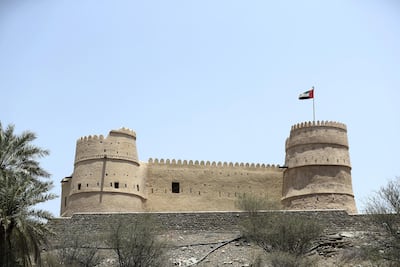The UAE was formed in December 1971 but it took another two years or so before the new country got its own currency.
On May 20, 1973, in came the dirham and out went the rupee, the dinar, the riyal and even the Maria Theresa silver thaler.
Having a currency was an expression of sovereignty and unity, especially when so many others had been in circulation among the seven emirates.
In this weekly series, The National breaks down the historical and cultural significance of the designs for each of the denominations.
Dh5
For many years, the Dh5 was the workhorse of UAE currency, representing the price of a soda and a shawarma, a trip across town in the old gold and white Abu Dhabi taxis, or a cup of karak tea and the morning newspaper. Even today it remains a welcome sight for small cash purchases or a tip.
The Dh5 banknote was introduced in 1973, and is today the lowest value paper currency - after the Dh1 note was phased out by the early 1980s.
It has been through a series of barely perceptible colour changes but only two major designs. The original pictured Fujairah’s Al Bithnah Fort, with the words “Five Dirhams” in English and the number 5.

The Arabic side featured a watermark of composite design that included a sailing dhow and the Arabian Gulf coastline, an oil derrick, palm tree, string of pearls and a line of camels.
The design we know today was introduced in 1982. The Arabic side shows Sharjah’s Central Market, generally known as the Blue Souq, which opened in 1978.
On the English language side is the bay at Khor Fakkan and a detail of the nearby Imam Salem Al Mutawa Mosque, built around 200 years ago and one of the oldest in the country.
Alongside is a watermark of a sparrow hawk, widely used in falconry and which now appears on all UAE banknotes.
The design reflects both Sharjah’s peaceful Arabian Sea coast and its busy economic heart. In 2015, a tactile feature of small horizontal lines on the short sides was added to assist the sight impaired.





















